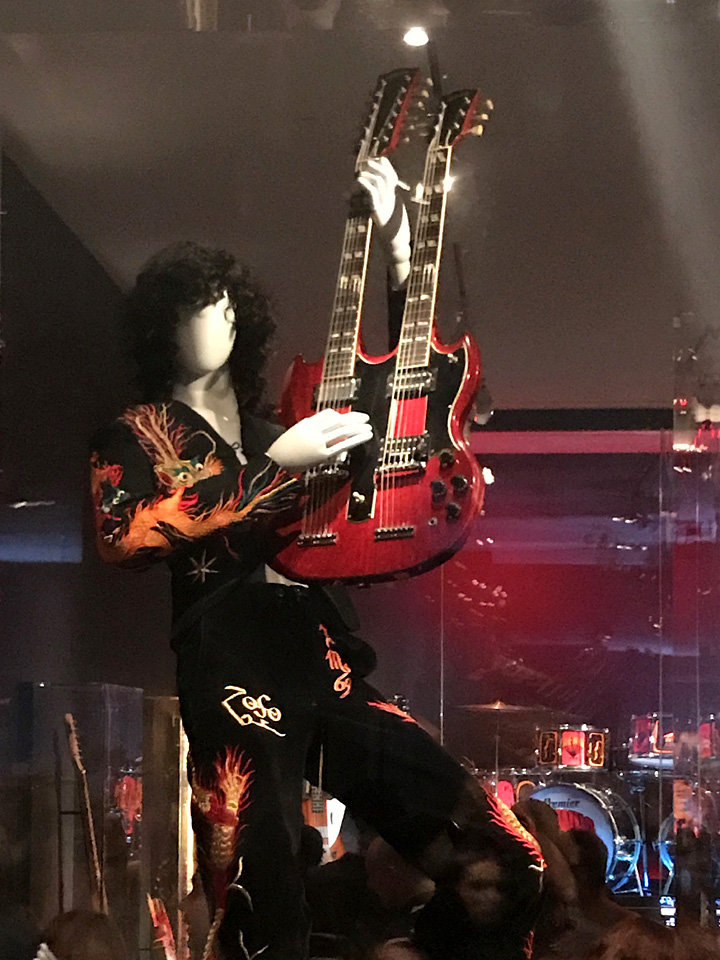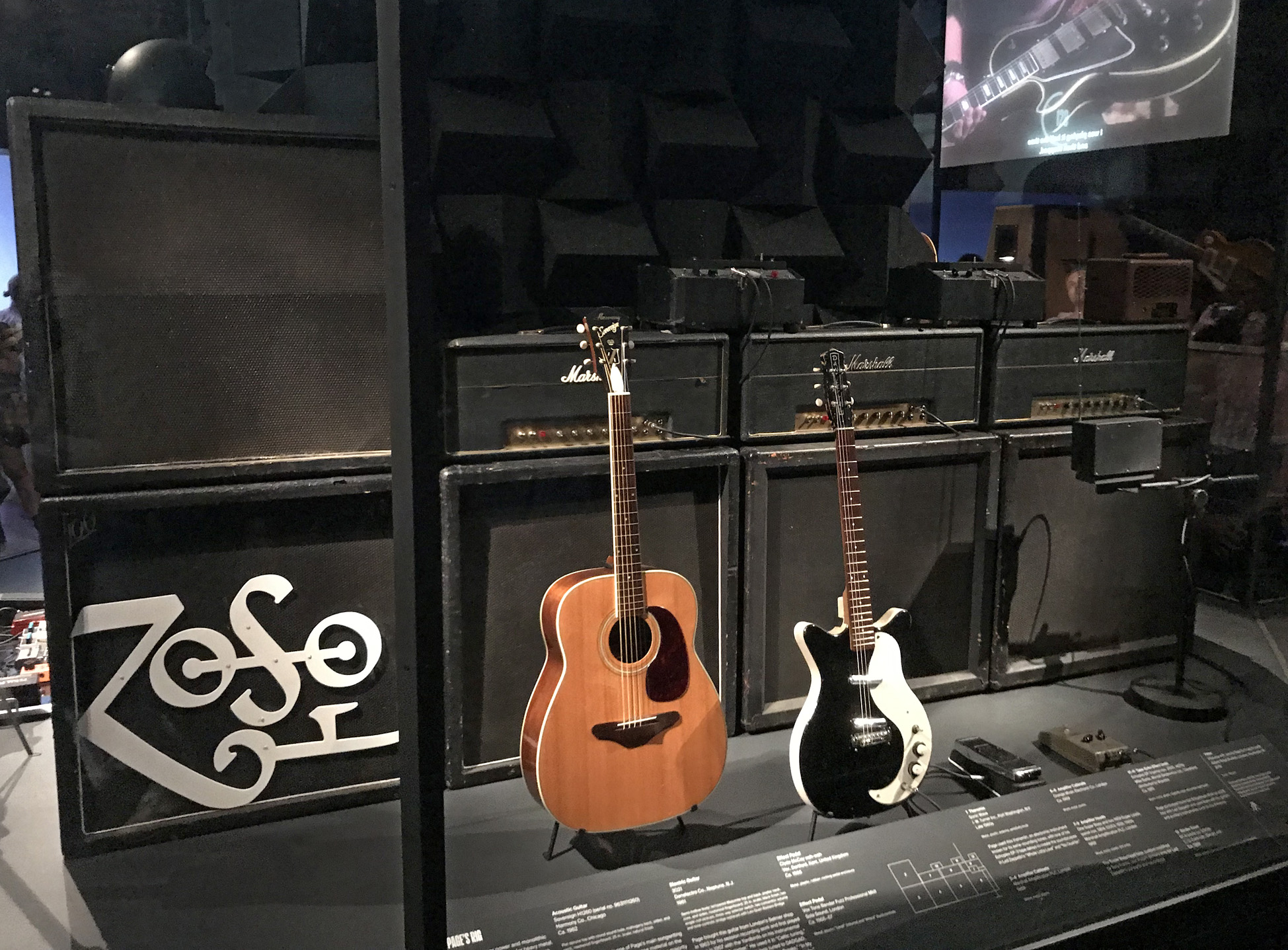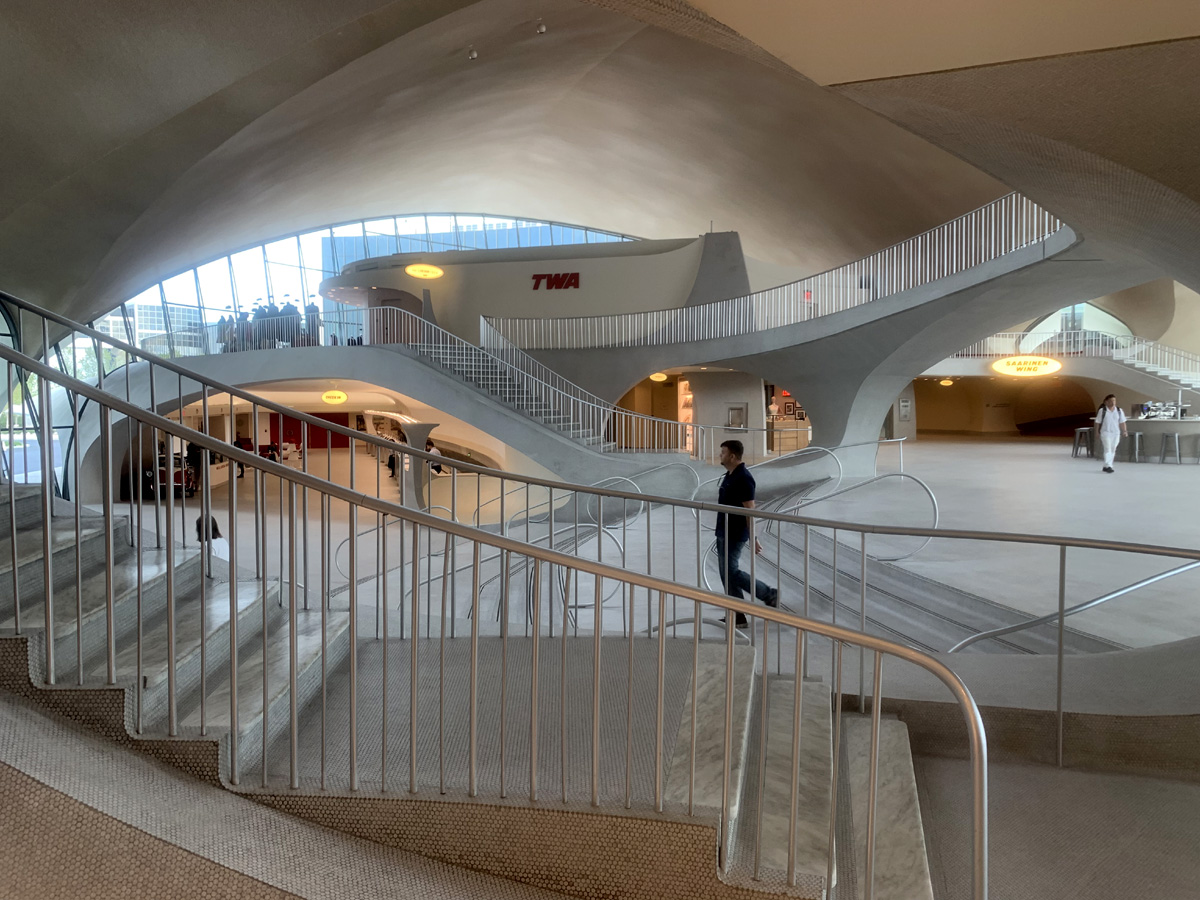Two weeks ago, I took an impromptu drive to Phoenix for the last weekend of their The Electric Guitar: Inventing an American Icon exhibit. This last weekend, I decided to continue this combo theme of Waiting ‘til the Last Minute and By the Way, You’re Not Getting Any Younger. I found a decent flight on Jet Blue and headed off for 3 nights in CT/NY, culminating in a special guided tour through the MET’s epic Play It Loud exhibit. Similarly, this was its last weekend, with over an hour wait line snaking through the museum throughout Sunday.

The main purpose of my trip was to catch up with my friend Rick Hilsabeck and his wife Sarah Pfisterer. You may have seen them on tour as, respectively, the Phantom and Christine in the Hal Prince-directed Phantom of the Opera. They now run their Wiremill Academy of Performing Arts in Redding, CT. (Left: weather was perfect. Though fall hadn’t started, the area was beautiful, especially around the Bridgeport coast.)

Rick and Sarah had recently sent their oldest daughter off to school in Nashville, so I had my own room, though I had difficulty trying to channel my inner teenage girl. (Right: I was also reacquainted with their “living Muppet,” Cody, the talking dog.
Rick was and is one of my best high school friends who was the lead singer of our various garage rock bands before heading off for a successful professional stage career. To my surprise, he is back to playing guitar (and, in fact, teaching it these days as part of his quadruple threat). So it was the perfect weekend to finally hang with them at their home and then all go for our nostalgic outing.

When’s the last time I saw Grand Central Terminal? I didn’t remember this.

Rick and I in the foyer of the Met after our 40-block walk. Again, I lucked out on weather; NY was just gorgeous. (All photos are by either Rick, Sarah, or me. As always, they expand to large-huge)
Another special friend is Jayson Dobney, who now heads the Musical Instrument Department of the Metropolitan Museum of Art. Yes, he scored a major gig. It was Jayson who envisioned and pitched the Rock show (in conjunction with Cleveland’s Rock & Roll Hall of Fame) and must surely now be their “golden boy,” this thing being such a huge hit (650,000 saw it, it’s among their top-attended shows of all time). I’m super proud of him and cannot imagine putting together such an epic show. He kindly gave us some of his valuable time (overtime all weekend) to shepherd us through the packed multiple exhibit rooms with behind-the-scenes stories and gossip. (If I told you, I’d have to kill you.)

With Jayson in front of Jimmy Page’s “Number One,” his main guitar throughout his entire career.

Almost the first thing one saw was the Beatles display (other guitars of theirs were scattered elsewhere).
Not being a collector or researcher of electric guitars, I had only my nostalgic interest in the period and some of the particular “guitar gods” I grew up on. I was surprised therefore by the emotional impact all of this had on me. It does little for me to see photos of these instruments in the hands of their players; it was inexplicably different being in front of the actual physical instruments, where a completely different connection occurs simply being in the same space, breathing the same air as them (scoff all you like, it was almost like they were alive). Words here are meaningless; you had to be there – and either feel it or not, depending on your life (and perhaps recreational drug) experiences.

How do you follow The Who at the Monterey Pop Festival? By setting fire to, and destroying your own hand-painted Strat, of course. One of the fragments of Hendrix’ guitar, serving almost as a religious relic to the faithful (count me among them).
Jayson also brought up how instrument nerds like he and I usually don’t realize or anticipate the extant of the “emotion factor” these instruments and exhibits hold for the public and fans. I then observed that the represented musicians were almost entirely from my own generation, not his – which he acknowledged, saying how that better allowed him to do his job. It helped the younger, non-guitarist curator to (fearlessly? naively? cluelessly? Pick two) approach these living legends like an impassive pro, whereas anyone from my generation would have been helplessly stammering like Ralph Kramden in The Honeymooners. C’mon – he hung with Jimmy Page in London when they shot all his musical interview footage!
 The closest I’ve ever been to Jimmy Page (never got to see a Led Zep performance live): The iconic Gibson double-neck and his “dragon suit”! (hair not his)
The closest I’ve ever been to Jimmy Page (never got to see a Led Zep performance live): The iconic Gibson double-neck and his “dragon suit”! (hair not his)

From London to NY: Jimmy Page’s entire live rig in America’s most prestigious museum…and why not?
Once Page was on board (he loaned all his key guitars and aforementioned rig), others were soon begging to sign up. Name any of your favorite rock stars and one of their personal instruments was probably in the show, from their own personal collection or from a key collector (many also on loan from the Rock & Roll Hall of Fame). The Beatles, Keith Richards, the Who, Clapton, Everly Brothers, Hendrix, Yardbirds, Van Halen, Stevie Ray Vaughan, Nancy Wilson, Metallica, Prince, Steve Miller, Grateful Dead, Keith Emerson, Ray Manzarek, Ravi Shankar, Bob Dylan – it just went on and on!

An entire stage of original Who instruments. Jayson got the original drum set from the Victoria & Albert museum and the toms from a private collector – the first time the whole set has been together since Keith Moon’s death. On another wall was Townsend’s destroyed guitar from the 1973 Rolling Stone magazine shoot.

Rick went to many an Emerson, Lake & Palmer concert back in the day (I saw them once) – perhaps his favorite high school group. Needless to say, bellying up to Emerson’s original synthesizer array was about as cool as it gets. This one is not in the extensive accompanying hardbound catalog book, being a late addition loan from a private collector.
Rick also remembered Emerson stabbing his organ with knives (well, guitarists get to smash their guitars, what’s a poor keyboardist to do?!)

Original organ and original knives, of course.

Jayson pointed out Steve Miller’s painted Gibson as perhaps the most beautiful object in the exhibit.
Afterwards, Jayson took us through their recently remodeled Musical Instrument Galleries. I immediately noticed the “sparseness,” and he explained the new focus on fitting in within an “art museum” rather than being a packed musical instrument museum (I hope he wasn’t alluding to my own triple-parked collection). Only a third of the amount is now on display, just a fraction of their holdings. Aesthetically, I had to admit I was in full agreement, while still missing the opportunity to wallow in the many other wonders I knew were behind the scenes.



From the Electric Guitar exhibit in Phoenix to the Met’s own extravaganza downstairs, I didn’t expect to have any energy left for another electric instrument display…but that pipa (right) drew me right back in!

As you probably know, I’m a sucker for anthropomorphic instruments…


Not a plucked string “Apollo Lyre” but a fascinating free reed instrument.

An original Orville Gibson mandolin is always worth a trip.

An “art deco” inspired oud from a local luthier, and their Mozzani harp guitar. This is one of the five that Mario Maccaferri acquired and brought back after his mentor Luigi Mozzani’s death. Collector Scott Chinery eventually bought them all; after his death, they were dispersed to the four winds. One was briefly owned by my Brussels friend Benoit Meulle-Stef and is now at Retrofret, and the carved back maple instrument is now in the Miner Museum. The other two remain in anonymous hands.

Sort of a sister to that 11-string 7-course Mexican guitar acquired by the National Music Museum in SD, this one is beyond exquisite. If it reminds you of a “12-string guitar,” you might want to read what I think about all that in my Birth of the 12-String article.

One of my absolute favorites – a beyond insane J. Tielke c.1685 bell cittern.

Jayson explains to my friends more of the “Art Museum” approach (next).

How do you display a flute collection to the general public? By making it all about the different materials, as in this brilliant concept by curator Bradley Strauchen-Scherer.
Of course, Bradley and team’s major brainstorm was “Fanfare.” While I’ve enjoyed the photos (she also presented the “Making of” at our last AMIS convention), being able to walk around it in 3 dimensions was breathtaking. Bravo!

The following morning, we got to JFK airport early, so my friends dropped me off at the wonderful, newly-restored TWA hotel. I guess I had never seen (or knew anything about) this Saarinen-designed architectural design treasure. Like the Met, it needs to be experienced in person, as the multitude of intersecting curved lines would change in both 2D graphic & 3D spacial design with each step. Ultra-cool!
 A 180 pan shot
A 180 pan shot

Can you say “curvilinear Euclidean space”?

TWA flight attendant outfits through the ages was one of various special displays.
What a whirlwind trip, but what a blast! Indeed, I “heart” NY.






Very cool stuff!
Both of you look great!
Excellent – I’m so glad you managed to see it before the exhibition closed. Thanks for the write-up.